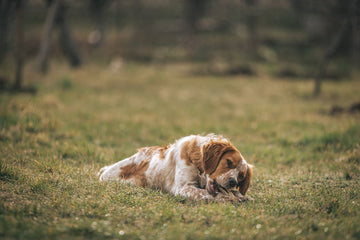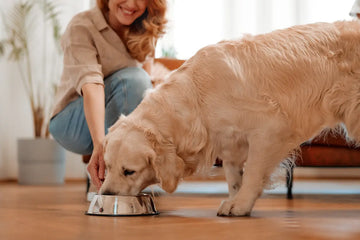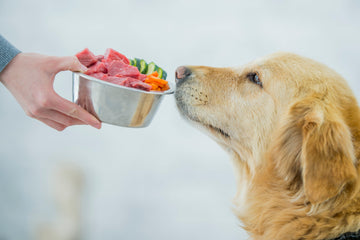How to Transition Your Dog to a Raw Diet

At Raw Dogs Dorset, our answer to the question,
“How do we start our dog on the raw diet?” is simple: “Slowly!”
Switching your dog to a raw diet is a process that should be approached with patience and care. While the raw diet offers all the nutrients your dog needs, it’s important to remember that this transition is a marathon, not a sprint. The goal is to help your dog absorb proteins in a way that mimics their natural diet, but with the added benefit of modern, balanced feeding practices.
Start with One Protein
The first step in transitioning your dog to a raw diet is to start with a single protein source. We recommend beginning with white meat, such as chicken or turkey. This should be the only protein your dog consumes for the first 7-10 days. Why white meat? White meats are easier on your dog’s digestive system and are less likely to cause adverse reactions as their system adjusts. This initial period allows your dog’s digestive system to break down the new protein and gives you time to monitor for any allergies or sensitivities.
Gradual Introduction of New Proteins
After the initial phase, it’s time to introduce another white meat protein, continuing with a single-source protein for another 7-10 days. This slow and steady approach ensures that your dog’s digestive system adapts without becoming overwhelmed. Once you’ve introduced all the white meats available to you, it’s time to move on to red meats such as beef, lamb, veal, and venison. These proteins are richer, with higher blood and fat content, so take care to monitor your dog’s reaction. It’s common for dogs to experience looser stools or darker stool colors initially, so you may want to extend this phase slightly to ensure they adjust properly.
Introducing Tripe and Completing the Transition
Once your dog is comfortable with both white and red meats, you can introduce tripe, which is the stomach lining of cows or lambs. Tripe is incredibly nutritious and offers a different texture and taste that many dogs love. By this stage, which typically takes around 8-12 weeks, your dog will have experienced a wide variety of proteins, allowing you to identify any that may not agree with them. With this knowledge, you can now tailor your dog’s diet to meet their specific needs and preferences.
Settling into a Routine
After completing the initial transition, many experts, including Raw Dogs Dorset, recommend rotating different proteins throughout the week. This variety ensures your dog gets a broad spectrum of nutrients, and helps maintain their interest in mealtime. The benefits of raw feeding are numerous: from a shinier, healthier coat and stronger, cleaner teeth, to improved muscle definition, better mental well-being, and a generally happier temperament. Soon, you’ll see why feeding your dog as nature intended is so rewarding.
Key Rules for Raw Feeding
Remember these simple guidelines as you transition your dog to a raw diet:
- Start slowly.
- Stick to a single protein each time.
- Record the results.
- Move onto the next meat.
Need Help? We’re Here for You
At Raw Dogs Dorset, we’re committed to helping you every step of the way, whether you’re transitioning from kibble or canned food, or starting your puppy on raw from the get-go.
Our team is always ready to provide advice and support. Feel free to reach out to us via social media Facebook, Instagram or visit or call one of our two stores Blandford Store 01258 268180, Moordown Store 01202 900052 where our knowledgeable staff will be happy to assist you.




